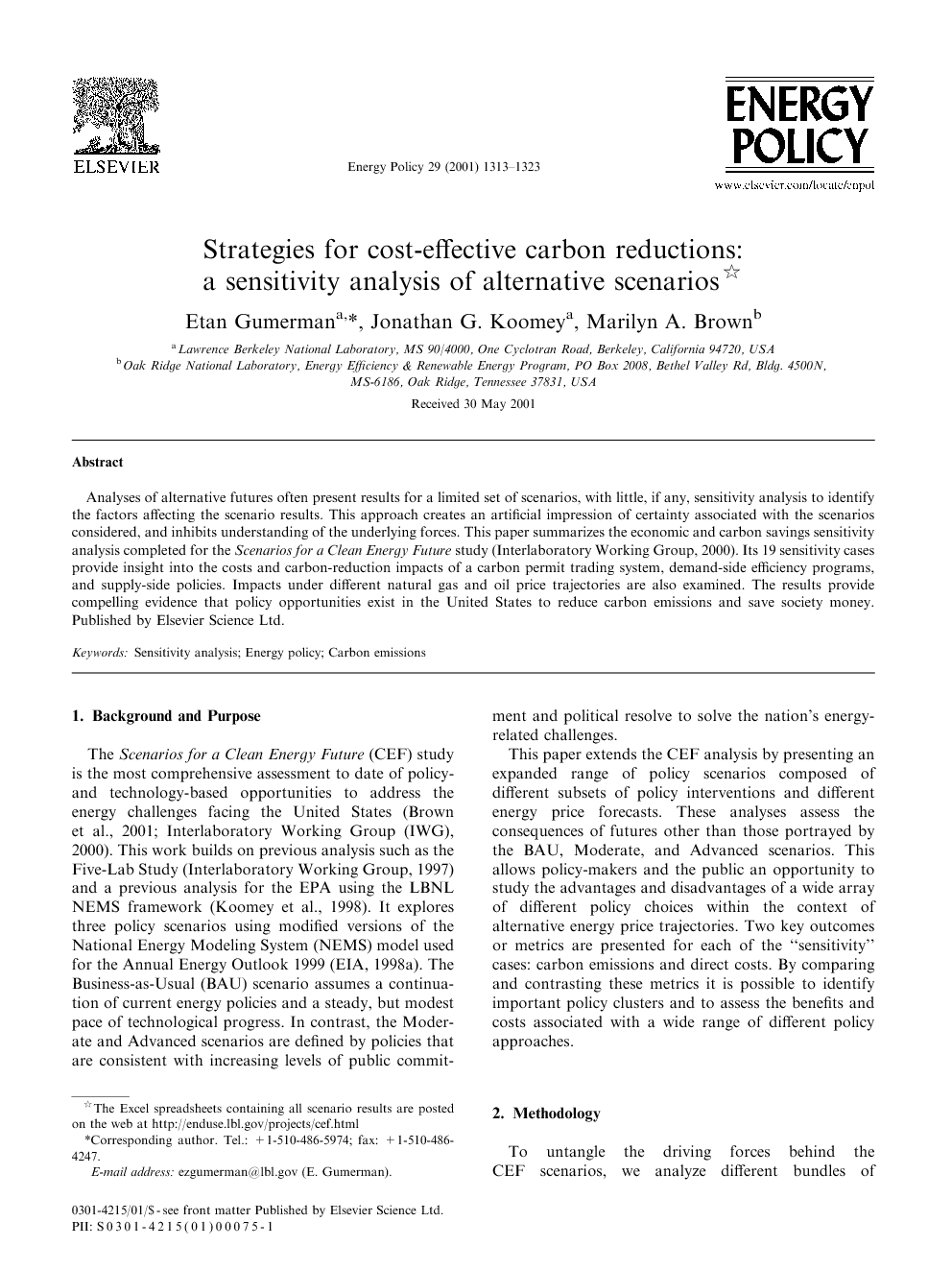ترجمه فارسی عنوان مقاله
استراتژی برای کاهش کربن مقرون به صرفه: تجزیه و تحلیل حساسیت سناریوهای جایگزین
عنوان انگلیسی
Strategies for cost-effective carbon reductions: a sensitivity analysis of alternative scenarios
| کد مقاله | سال انتشار | تعداد صفحات مقاله انگلیسی |
|---|---|---|
| 25583 | 2001 | 11 صفحه PDF |
منبع

Publisher : Elsevier - Science Direct (الزویر - ساینس دایرکت)
Journal : Energy Policy, Volume 29, Issue 14, November 2001, Pages 1313–1323
ترجمه کلمات کلیدی
تجزیه و تحلیل حساسیت -
سیاست انرژی -
انتشار کربن -
کلمات کلیدی انگلیسی
Sensitivity analysis,
Energy policy,
Carbon emissions,

